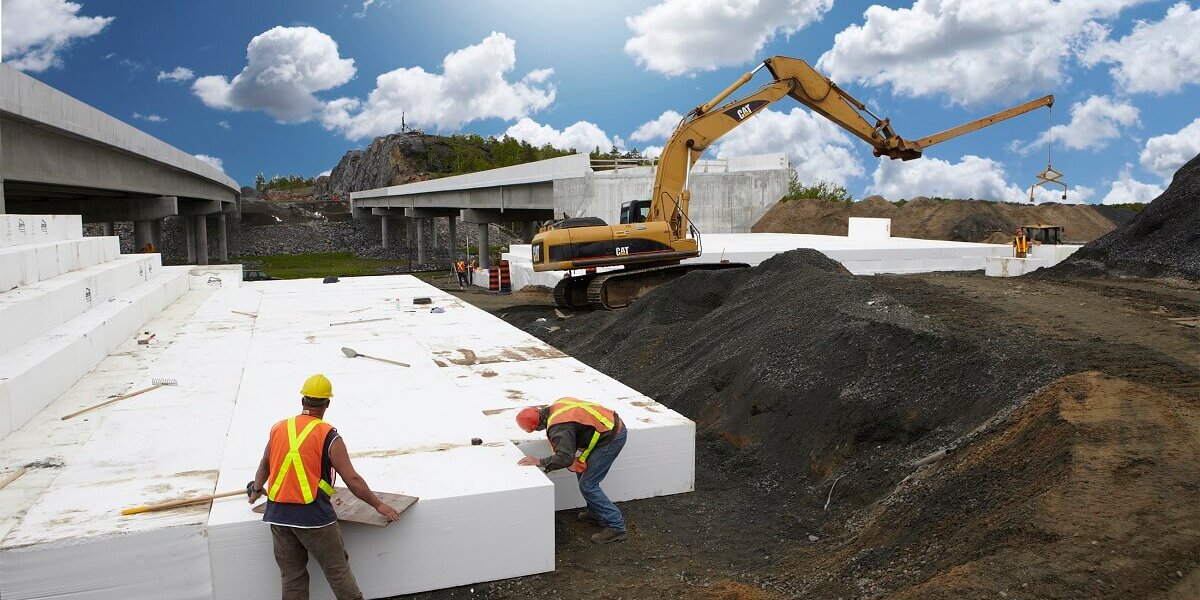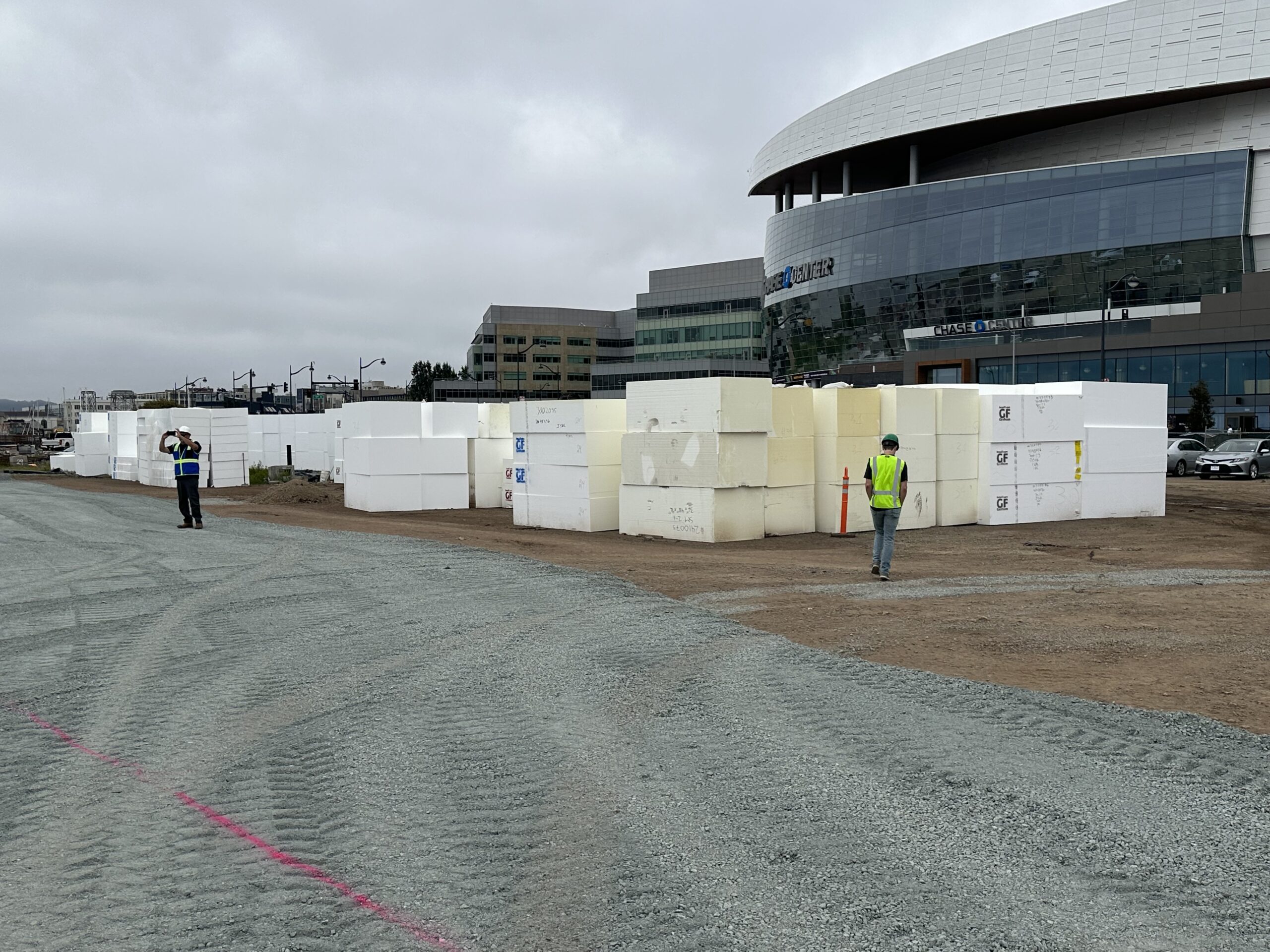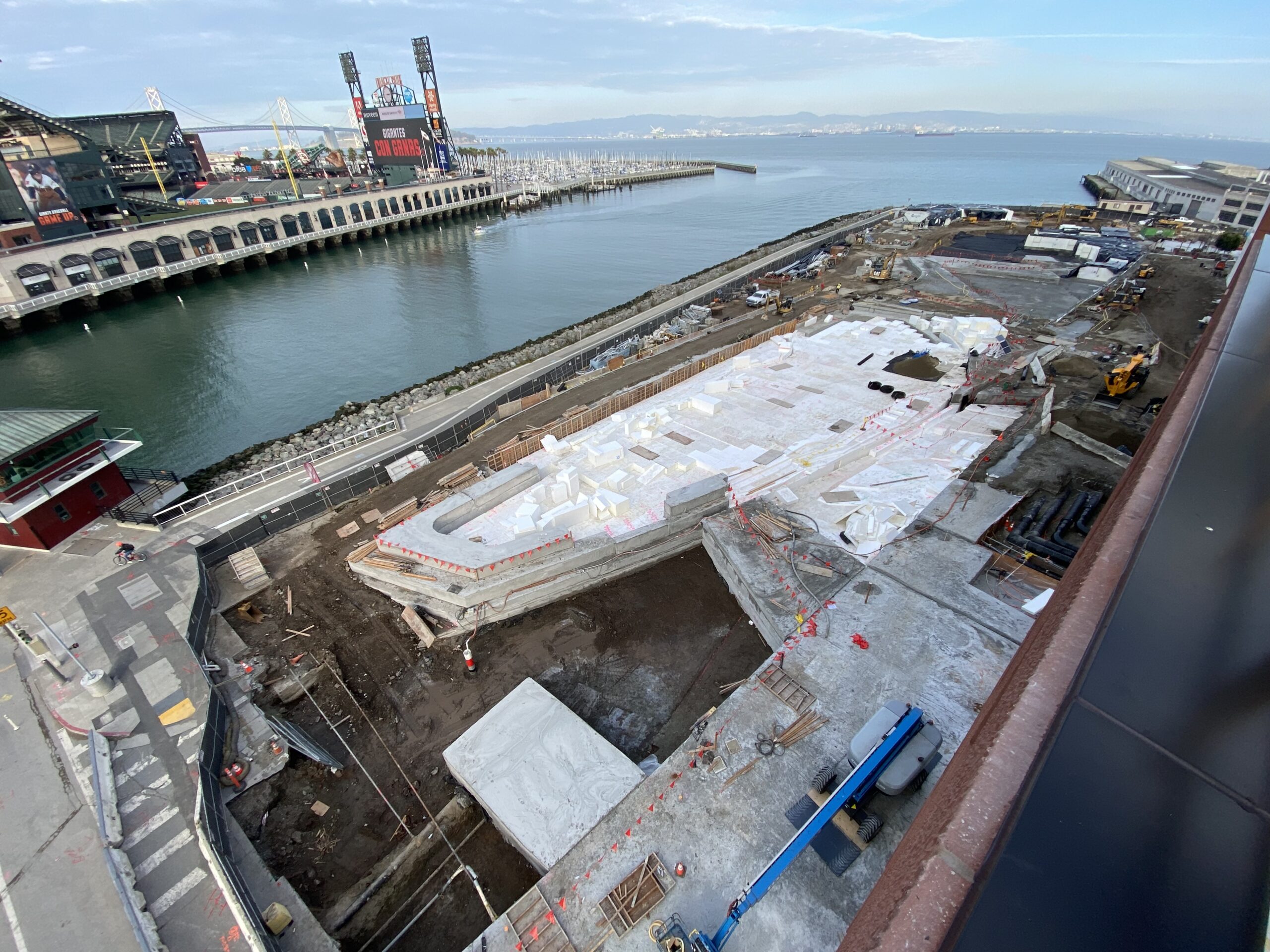Currently, there are more than 5 million miles of highways in the U.S. And thousands of miles of transportation projects are already on the books for 2020 and beyond. Many of these projects will feature EPS geofoam. EPS geofoam blocks have been used in road construction globally since the 1970s and they have proven to be a popular alternative to traditional fill materials such as cellular concrete, pumice, shredded tires, soil and wood chips. Projections indicate that use of EPS geofoam blocks will continue to rise as infrastructure across America continues to grow though the construction of bridges, new and repaired roads, and more.
Innovative EPS geofoam is already widely accepted as the lightweight fill material of choice when it comes to road construction. In 2005 it received a nod from the construction industry when it released the ASTM D6817 standard, specifically for geofoam. The following year, the Federal Highway Commission designated EPS geofoam as the go-to product for lightweight fill projects on a tight deadline. Many administrators in state Department of Transportation (DOT) agencies, such as CALTRANS in the state of California, began adding specification sheets for EPS geofoam to their documentation.
There are many reasons contractors, civil engineers and DOT administrators choose EPS geofoam for their highway projects. Here are five you should know about.
#1. EPS geofoam speeds up completion of your construction projects.
Any time you have to deal with a challenging project delivery date, EPS geofoam should be your first choice. And when it comes to highway construction, deadlines are always tight. There’s a lot riding on completing them smoothly and on schedule. The slightest delay can throw the entire project off track. Using EPS geofoam blocks can cut weeks, months, or even years off your construction schedule and enable you to complete your project ahead of schedule.
By specifying EPS geofoam you can get a head start on your project right off the bat. That’s because it’s 100% recyclable and free from chloroflure carbons (CFCs), hydrochlorofluorocarbons (HCFCs), formaldehyde and dyes, all of which may be harmful to the environment.
On the jobsite, EPS geofoam continues to help speed up the construction process. It’s up to 100 times lighter than other traditional fill materials. That’s 1% the weight of soil and less than 10% the weight of other lightweight traditional fills. Not having to lift or maneuver heavy materials reduces physical stress on construction workers. And easier equates to faster in roadway construction!
EPS geofoam can be precut to size at the factory and delivered ready-to-use at the jobsite, so your project won’t be slowed down by field trimming. And since it’s an engineered product, your progress won’t be impeded by the need to conduct time-consuming quality assurance/quality control testing. All that is done before you even receive it!
#2. The overall total cost of your project will be reduced when you use EPS geofoam.
Roadway construction isn’t cheap. But by using EPS geofoam blocks rather than traditional construction materials such as soil or lumber you can save on labor costs, effort and time. One recent estimate for constructing a two-lane, undivided road sets the price at between $2 million and $3 million per mile in a rural area. If the same road is set in an urban locale, the price shoots up to between $3 million and $5 million. And that’s a conservative estimate. The actual cost can be much higher. Any time you can cut costs is a plus, and EPS geofoam can help you contain your costs by up to 25% to 30%! How?
Labor is one of the most important components of the construction budget. Since EPS geofoam is so lightweight and easy to handle, you can often reduce your labor crew on the jobsite. Fewer men means less dollars out of the budget. Another benefit: Because EPS geofoam is so light and easy to handle, construction workers will run less risk of incurring musculoskeletal injuries on the job, one of the top reasons for long-term employee absenteeism. And since each block, which is up to 100 times lighter than traditional fill materials such as soil, you won’t have the added expense of using heavy earthmoving equipment on the jobsite for this scope of work. You’ll also save on the cost of transporting EPS geofoam to your jobsite.
Actual road construction itself will go smoother and faster with EPS geofoam. Since EPS geofoam can be factory-engineered you’ll receive a uniform product that has already met stringent quality control tests. There will be no surprises like you often get with natural materials such as soil, lumber or rock. EPS geofoam’s performance is predictable, maximizing installation efficiencies.
And EPS geofoam can be installed under weather conditions that typically would bring projects relying on other types of fill to a standstill. This means your project won’t be delayed by weather-related lost days of work, which can also bring down the cost of your project.
#3. Road construction is a breeze when you use EPS geofoam.
You can also schedule EPS geofoam for just-in-time delivery, stacking the blocks you’ll need onsite so they’ll be right there and ready to use when you need them. No need to store material and move it to the jobsite when you’re ready to use it. So, there’s far less staging required with EPS geofoam than with other fills. And, if field conditions provide you with a few surprises that necessitate making adjustments to your installation plan, EPS geofoam can easily accommodate those changes. It can be cut to almost any shape you end up needing, right at the construction site.
The construction process itself isn’t complicated and your workers will master the basics with only a brief training period. Since EPS geofoam is so lightweight, it’s easy for workers to lift, carry and position the blocks by hand efficiently and quickly to achieve the desired thickness to meet the job requirements.
Finally, EPS geofoam is about 1 to 2% the density of soil, rock and other traditional earth materials. That gives it an advantage when it comes to reducing stress on underlying subgrades.
If you’ve ever used soil as a fill in road construction, you know it requires a lot of spreading and compacting, and that means using heavy earthmoving equipment. With EPS geofoam, you don’t have to mess with any of that!
When all is said and done, if you want your construction process to be smooth and hassle-free, using EPS geofoam is the way to go!
#4. EPS geofoam provides excellent soil remediation for project locations with weak soil.
EPS geofoam can make road construction projects easier, faster and more cost-effective than other traditional construction materials. But what about when soil remediation is an issue?
EPS geofoam shines when it comes to road construction on sites where the soil is soft, loose or otherwise too unsubstantial to provide a firm foundation. EPS geofoam features extremely high compressive resistance of up to 100 psi. That makes it perfect for road construction projects – even state and interstate highways which must bear constant and heavy traffic loads – in locations with weak soil.
#5. EPS geofoam is stable and durable.
Do you have a road construction project that’s set in the hills or an area prone to landslides? It’s been common practice to use EPS geofoam blocks as fill for side hill projects for years. And with good reason. This type of project requires a material that is moisture resistant, and the closed-cell structure of EPS geofoam makes it an ideal candidate.
In hilly areas, the goal is to reduce the weight and pressure against the side of the hill to stabilize it, thereby preventing future landslides and slope failure. EPS geofoam resists vibrations which helps roadways absorb the impact of earthquakes and tremors and keeps them more stable.
EPS geofoam is strong enough to stabilize hillsides and lightweight enough to reduce vertical stress on the soil below. And since the pressure is reduced on the underlying compressible soils, a road built using EPS geofoam in hilly areas is more stable and has minimal settlement.
EPS geofoam’s thermal advantage is another advantage for road construction. The air pockets that form during the manufacturing process makes EPS geofoam a great thermal insulator. EPS geofoam can provide frost protection so roads better resist freeze-thaw damage. In fact, EPS geofoam has been used for that purpose since the 1960s.
Finally, EPS geofoam is the basis for roads that are durable and long-lasting. EPS geofoam won’t rot or decompose over time and it isn’t affected by erosion like soil or rock. Your road is going to be around for a long time. And that’s what you want, isn’t it?
Check out construction industry trends for 2020 here!







